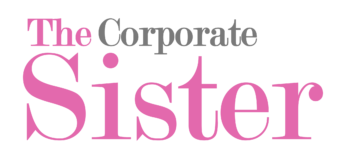As you file your taxes every year, have you ever wondered if there is an element of gender bias embedded in the tax policy? As a Certified Public Accountant and a working woman and mom, I’ve often asked myself the question. And if you have, then you definitely are on to something.
While tax policy can certainly contribute to increased gender equality, which translated into significant economic dividends, the reality is, in many countries, it’s actually doing the very opposite, thus fueling the gender tax bias. When it comes to gender tax bias, there exists a distinction between explicit and implicit bias. Explicit gender tax bias occurs when there is a legal link between tax code provisions and gender. Implicit gender tax bias, on the other hand, happens when existing gender inequalities cause tax policy outcomes have different implications for women and men. Even when gender tax biases are not overtly explicit, implicit bias remains embedded in factors such as earned income, property ownership, consumption choices, wealth, along with differences in gendered societal expectations.

According to the Organization for Economic Co-operation and Development (OECD) first cross-country analysis of 43 G20 countries’ approaches to tax policy in the report entitled “Tax Policy and Gender Equality: A Stocktake of Country Approaches”, gender tax bias is not ignored by governments. As a matter of fact, gender equality appears to be an important factor in the design of tax policy in most countries, with half of these having already passed tax reforms in favor of increased gender equity. Despite these efforts, a high risk of implicit tax bias was noted in most countries. In order to remedy this situation, more detailed gender-differentiated data is necessary. Unfortunately, much of this data is only available and accessible around income and labor participation, and more scarce around property ownership, wealth and consumption choices. As such, this scarcity of available data makes it more challenging to resolve these issues.
Watch this short YouTube video on the Gender Tax Bias:
One example of the gender tax bias, especially in our COVID-19 times, targets part-time workers, which are largely women. According to the OECD’s “Taxation of Part-Time Work in the OECD” working paper, women are more likely to hold part-time positions than men, at a rate of almost three to one. Along with this, there has been a decrease in the earnings level of part-time workers relative to full-time workers, as well as variations between part-time and full-time workers’ taxation attributable to said differences in earnings levels.
Another more implicit example has to do with the availability of deductions for unreimbursed work expenses incurred by men, more so than those incurred by women, including childcare and transportation costs for instance. Another example yet is embedded in consumption taxes such as the Value-added tax (VAT) in many developing countries, which end up raising the cost of services such as household services, thus disincentivizing women from working outside the home. Lastly, an unfair bias also exists in corporate tax incentives that do not favor sectors such as hospitality, the garment industry, micro-entrepreneurship, where women predominate. While these constitute a few instances of the gender tax bias, here are many more examples across countries and economies.
Overall, the onus is on governments, but also us all, to consider and implement measures in which tax policies and practices better promote gender equality. These measures could and should reduce both explicit and implicit gender tax bias, while supporting, prioritizing and giving tax access to women and households impacted by the COVID-19 crisis.
The Corporate Sis.









